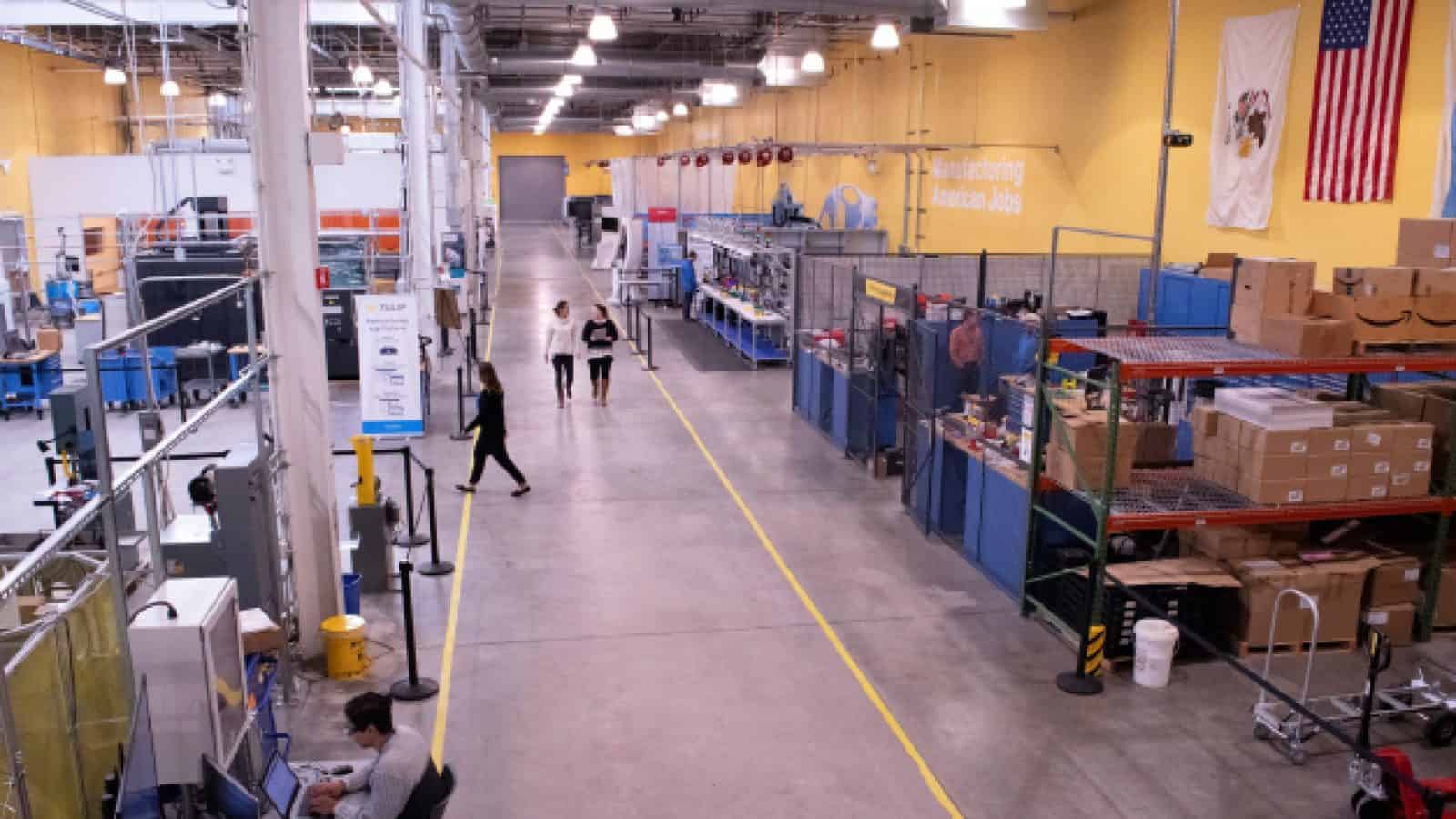How Manufacturers Can Win With Industrial SaaS Business Models

Providing software-based services offers manufacturers new avenues of profitable growth.

TAKEAWAYS:
● Industrial SaaS revenues generate margins two to five times that of traditional manufacturing businesses.
● Manufacturers with successful SaaS businesses share four traits: products with impact, relevance, connectivity, and deep customer relationships.
● CEOs can apply BCG’s six-pronged framework and review its latest report to develop winning industrial SaaS business models.
Industrial companies’ Software as a Service (industrial SaaS) ambitions have reached a tipping point. As many as 55 percent of North American manufacturers plan to use industrial SaaS business models as a source of growth, according to a recent survey conducted by the Manufacturing Leadership Council.
The reasons are obvious. Traditional avenues of growth for manufacturing businesses are becoming limited; products and systems are all connected and generate large volumes of data today; and industrial SaaS models are financially attractive, both in terms of margin and valuation multiples.
Although the opportunity is well known, only 15 percent of manufacturers have had success in building a significant industrial SaaS business, according to the same survey. Clearly, there’s a large gap between ambition and reality.
If you’re the CEO of a manufacturer looking for new avenues for growth, how do you start building an industrial SaaS model that will change your company’s growth trajectory?
Why Industrial SaaS is Future Critical
Many manufacturers have exhausted traditional opportunities for growth, such as market share and geographic expansion, and are exploring industrial SaaS as a next-generation growth platform. Rapid advancements in product and system technology that go beyond data availability to scalable ways that leverage data—AI and generative AI among them—have made industrial SaaS businesses technologically viable today.
The benefits are evident. Industrial SaaS revenues are more profitable than conventional ones, with margins two to five times that of traditional businesses. They’re less cyclical, too, with subscriptions less likely to churn than product sales. And they generate revenue multiples in the stock markets that are two to five times larger than those of the core business.
“Industrial SaaS models are financially attractive, both in terms of margin and valuation multiples.”
Recent BCG research highlights three key reasons why manufacturers have reached an inflexion point with industrial SaaS business models, and why we suggest starting with them now. First, the first-movers have tasted success. Between 2020 and 2023, companies with significant service revenues grew between 1.5 and 2 times faster than traditional manufacturers did.
Second, investors’ expectations are rising. A BCG analysis of around 100 manufacturers’ earning calls revealed a 15 percent growth rate in conversations with investors on industrial SaaS models, while traditional product-related topic discussions have fallen every year.
Third, investors want to see industrial SaaS businesses scale before they fully reward the strategy in terms of multiples. Another BCG analysis reveals that the business must grow to around 20 percent of a company’s enterprise value before investors will grant higher multiples.
Pioneering Successful Industrial SaaS Models
Consider two successful transitions to industrial SaaS business models, one by a large multinational manufacturer and another by a smaller regional player.
A $50-billion industrial equipment manufacturer has, over the past 15 years, increased the on-board telematics, connectivity, and machine-vision capabilities of its machines as well as its data capture and processing abilities. That has allowed the company to rewrite its corporate strategy in terms of creating fresh customer value through machine and job optimization. The manufacturer is delivering new solutions to customers and has set a goal for its industrial SaaS business to cross 10 percent of revenues by 2030.
A $300-million industrial automation market leader designs, builds, and services refrigeration systems across the US. Leveraging its market leadership and large installed base, the company has developed an AI-powered, data-driven, digital service technician platform. Using the platform reduces clients’ maintenance, repair, and operations costs, and provides them with a three to five times return on investment in the platform. This company, too, expects its industrial SaaS business to account for over 10 percent of revenues in the near future.
“Between 2020 and 2023, companies with significant service revenues grew between 1.5 and 2 times faster than traditional manufacturers did.”
Like these two companies, manufacturers that have successfully created industrial SaaS-based businesses share four characteristics. As a starting point, check whether your company meets these four criteria as you plan your transition:
- Impact––Your products measurably affect customers’ operations and improve their bottom lines.
- Relevance––Your products are a large contributor to customers’ operations in terms of criticality, cost, and/or performance.
- Continuous Upgrades––Payments for services on an ongoing basis require continuous value delivery that must improve over time (think software upgrades).
- Customer Relationships––You have close, long-term relationships with end users that provide deep insights into customer needs and behaviors.
How to Build a Winning Industrial SaaS Business Model
The technology is available, the upside is obvious, and the pioneers have experienced success. To act on the industrial SaaS opportunity, BCG has developed a six-pronged framework for CEOs:
- Identify opportunities by customer value unlock.––Quantify this value to determine if the payoff is worth the effort and for which customers. Then, set a bold vision with value-unlock targets, and communicate them across the organization. This will tell you where to focus.
- Use bundling to refine your go-to-market strategy.––Simplify your offer map and create bundled offerings. Bundling is a proven way to increase customer acquisition, facilitate cross-selling, and improve customer retention.
- Define and build the tech stack.––To support an industrial SaaS model, your company will need Internet of Things (IoT), customer relationship management (CRM), and enterprise resource planning (ERP) systems, data analytics, cloud computing platforms, cybersecurity, hardware, and connected products, all working in concert, not in silos. Consider the compatibility between existing and future products and systems, scalability, and the potential to meet future needs. Establishing a vision for the tech stack early is critical to ensure resources aren’t wasted.
- Use M&A proactively and opportunistically.––To build momentum, companies must be prepared to acquire products, capabilities, and talent to address new needs. Some manufacturers have made acquisitions to plug into existing channels and to house all their industrial SaaS operations in one place, among other reasons.
- Invest in delivering customer outcomes.––Companies will have to build industrial SaaS-specific sales motions such as land and expand; learn to focus on ensuring customer success; and develop the capabilities to provide software updates that improve customer performance over time. Lifecycle product management requires a different operating model that usually stretches most hardware-focused industrial companies.
- Specify the new talent and capabilities needed.––The talent needed to succeed with industrial SaaS models at scale is different than those manufacturers usually possess. Upskilling existing teams and becoming an attractive landing spot for digital talent are both difficult, but essential steps.
To delve deeper into how companies can execute an industrial SaaS strategy, please see Playing to Win in the Industrial Software as a Service Revolution.
The good news is that you don’t need to execute all these steps at once. You can sequence them in digestible bits over time according to a roadmap. A CEO can start by asking the strategy and business development team to define what an industrial SaaS strategy could look like for the company before aligning a plan with the leadership team.
But the time to start is right away. M
Authors Bios:

Merih Ocbazghi is a managing director and partner in BCG’s Chicago office. He is a core member of BCG’s Industrial Goods practice in North America, with specialization in strategy topics.

Katherine Smith is a managing director and partner in the firm’s Atlanta office. She is a core member of BCG’s Industrial Goods practice in North America.

Jonathan Van Wyck is a managing director and senior partner in the Minneapolis office of Boston Consulting Group. He leads the Industrial Goods practice for BCG in North America.
